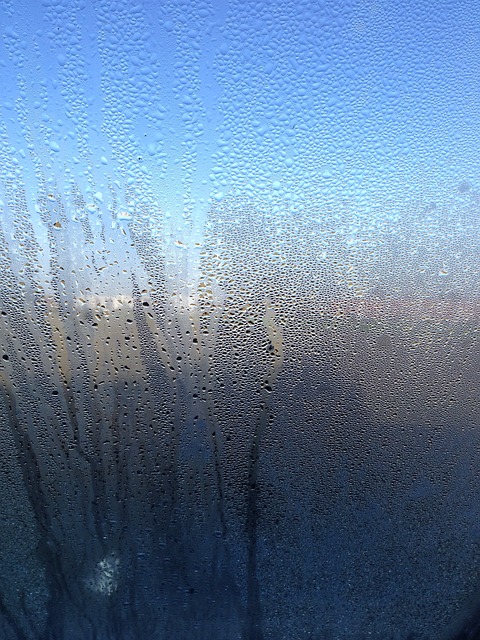You may have woken up one morning only to notice that one of your insulated glass windows or doors is a little cloudy. You probably used a damp or dry cloth to wipe the inner pane, but the cloudiness doesn’t go away.
You wipe the outer pane and still have the same results. Rather than clearing out, the cloudiness becomes thicker, larger and more prominent over the next few days and weeks.

pixabay.com
It is no surprise that you have purchased windows and doors with insulated glass for your residential or commercial structure. After all, its thermal insulation property means that it can conserve energy better than a single float glass would. Its ability to regulate temperature also helps you reduce expenses on air conditioning and heating.
What’s more, insulated glass is useful for sound insulation. This is especially beneficial for homeowners who reside near crowded areas like markets and places with high traffic.
Insulated glass units are also considered safer against burglary as they are tightly sealed and near impossible to break from the outside. It also protects interior furnishings such as curtains, sofas, and carpets from sun rays, ensuring the fabric continues to shine for many years.
Without a doubt, insulated glass is the go-to option for home and business owners seeking modern, long-lasting window replacement. It provides protection, comfort, and freedom from external distractions that you would need in your home or office.
But what really causes the insulated glass to fog? Can you really prevent the glass from fogging? If so, how?
There are many factors that could cause the insulated glass to fog. First, it is important that you identify the part of the glass affected by the fog. It could be on the exterior side of the glass facing outside, the interior side facing inside, or in-between the double-pane glass.
Fogs on the exterior side of insulated glass occur when the temperature inside the home drops below that outside, like on a hot and humid day. The significant differences in internal and external temperatures can lead to the buildup of water droplets and fog.
In the same vein, as the outdoor temperatures decrease and the interior humidity increases, water droplets can appear on the interior glass surfaces. Three major factors that lead to fogging include:
Heat Due to Direct Sun Exposure
The heat caused by direct sun exposure can lead to air expansion between the panes, and this can make the perimeter seals soften, weaken, and break over time. The continued contraction and expansion of the panes can cause the windows to push out and pull in air, which can be a major problem if it is moist air.
Damage Due to Water Exposure
The perimeter seals can weaken and break when exposed to water. To prevent this, ensure the insulated glass is elevated above the window sash using small setting blocks. Also, include channels or weep holes to allow water drainage.
Damage Over Time
Old age can cause perimeter seals to crack and let in moisture from the outside to penetrate it. The good news for many homeowners is that most window manufacturers now offer 10- to 20-year warranties considering the potential damage they could face.
How to Prevent Insulated Glass Fogs
Purchase Products Tested for Moisture Infiltration
Insulated glass should be tested under very strong conditions, including extreme cold and heat, sun, acid rain, driving rain, excessive humidity, salt air, as well as air and water infiltration. It is important that moisture infiltration tests are conducted to ensure the top performance of your windows and patio days for many years.
Choose the Perfect Glass for Your Climate
Fogging is more likely to occur in certain climates and times of the year. So, the better the insulation of your window glass, the more comfortable you will feel inside your home. Climatic conditions like altitude and exposure to the sun should be considered when choosing a window or patio door for your home. It is also important to consider factors like size, window placement, and noise.
Check for Third-party Verification
Check external sources to validate the strength of the insulated glass window or door. This third-party company must have conducted a review to ensure the manufacturer complied with industry and other performance standards.
Your Best Defense Against Fogging Insulated Glass
Buying an insulated glass window or patio door that has a good and long warranty is the best way to protect yourself against fogging issues. These days, a 10 to 20 years’ warranty is the standard, but some manufacturers even offer better warranties that could last a lifetime.
They install all the seals and safeguards necessary for the insulated glass to last for many years.
Unfortunately, things could easily go wrong if the insulated glass is a direct-set glass manufactured to a specific shape and size. In this case, the seal could weaken and become vulnerable to fogging if setting blocks are not installed to support the bottom seal and protect it from moisture.
In most cases, the manufacturer of the direct-set glass will offer warranties if the window or door is installed by them. While this installation may be more expensive, it may give you a better guarantee of quality.
As a homeowner, it is important that you periodically examine the frame and seals of your window or door. Regular checks can reveal separated sash frames which you can caulk to increase the lifespan of the insulating glass.
Another way to protect your double-pane windows is to allow quality air circulation both in and out. This way, you would keep moisture away from accumulating on the windows. You can also protect the doubles by keeping them clean and ensuring it is well sealed with paint.
Though insulated glass fogging may be ultimately inevitable, it makes sense that you know why they fog so you can prevent this from happening prematurely. It is also ideal that you only make purchases from providers that offer long term or even lifetime warranties.






